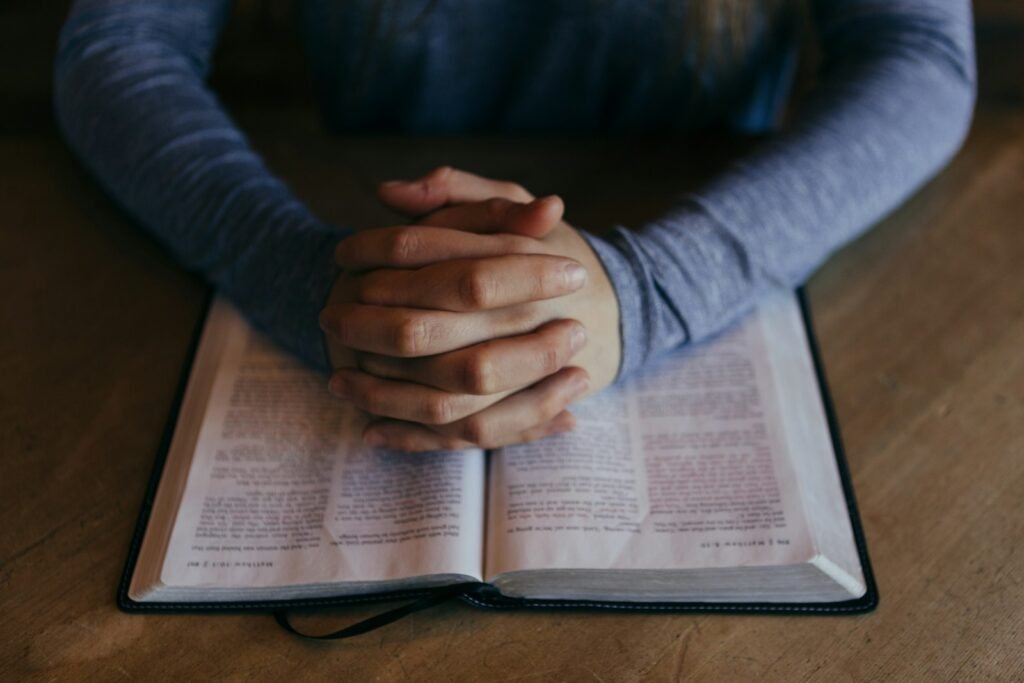Prayer: The Transformative Power of a Lifelong Practice ✨

Have you ever wondered why people across every culture pray? 🌍 Prayer stands as one of humanity’s oldest and most universal practices. People throughout history have reached out to something greater than themselves, finding comfort, direction, and purpose in the process. Whether you’re just beginning to explore prayer or looking to deepen your existing practice, this guide will walk you through the many dimensions of prayer and how it can change your life. In our hectic modern world, taking time to understand the roots, methods, and benefits of prayer might just give you the insights you need on your spiritual journey.
The Universal Language of Prayer 🌈
Prayer breaks through religious boundaries and speaks a language we all understand – one where we share our deepest hopes, fears, and thanks. Did you know archaeologists have found evidence of prayer-like practices dating back over 40,000 years? 🏺 Ancient cave paintings show what many scholars think are early humans in prayer postures. This tells us something fascinating – our drive to connect with forces beyond ourselves runs deep in our shared human experience.
From ancient Mesopotamian tablets with carefully inscribed prayers to indigenous communities who’ve passed down spoken prayers for countless generations, people have always turned to prayer when facing life’s biggest mysteries.
Prayer’s Many Forms
How we pray looks wildly different across cultures, but why we pray shows amazing similarities. Think about it – some people recite formal prayers in grand cathedrals, others chant by peaceful mountain streams, and many simply sit in quiet contemplation at home.
All these approaches help us recognize our human limits while reaching for something beyond ourselves. What I find most fascinating about prayer is how it fits perfectly into different cultural settings and personal needs, yet still looks familiar whether you’re in Tokyo or Toronto.
Anthropologist Tanya Luhrmann captured this perfectly when she wrote, “The way people pray shapes the way they experience their world and understand their God” (Luhrmann, 2012).

A Human Universal
Recent global surveys show that about 84% of the world’s population belongs to religious traditions that include prayer. Even many non-religious people pray during crises or celebrations.
This widespread practice suggests prayer meets essential human needs beyond specific religious beliefs. Prayer often serves as a bridge between our material existence and our search for meaning.
It creates space for reflection, connection, and transformation that we struggle to find elsewhere. Prayer’s persistence across human experience shows it’s more than superstition – it’s a fundamental way we engage with reality.
The Neuroscience Behind Prayer 🧠
What happens in your brain when you pray? Scientists have uncovered some amazing answers! 🔬
Brain Activity During Prayer
Neuroscientist Andrew Newberg took SPECT scans (a type of brain imaging) of people during deep prayer and found something remarkable. Your brain lights up in unique ways during prayer.
The prefrontal cortex (your attention and concentration center) shows increased activity. At the same time, activity decreases in your parietal lobes (which normally orient you in physical space).
This creates what Newberg calls the perfect brain state for transcendent experiences. You no longer feel the usual boundaries between yourself and everything else.

Neural Benefits
I read some fascinating research in JAMA Psychiatry about long-term prayer effects. Regular prayer might actually strengthen the neural pathways linked to empathy and emotional control.
Specifically, regions of the brain responsible for compassion, forgiveness, and emotional regulation—such as the anterior cingulate cortex and the medial prefrontal cortex—show signs of increased activity and connectivity in individuals who maintain consistent prayer practices. This enhancement in neural function often correlates with a greater ability to handle interpersonal conflict, reduce reactive behavior, and respond to stress with measured calmness rather than impulsive emotion.
Some longitudinal studies even suggest that these effects become more pronounced over time. For instance, people who have engaged in prayer for more than five years show thicker cortical regions in areas associated with emotional insight and social awareness. These physical changes support a growing consensus that prayer doesn’t just comfort us in the moment—it can lead to deep, long-lasting changes in the architecture of our brains that positively influence behavior, relationships, and personal well-being.
These findings align with anecdotal experiences of those who report feeling more centered, less irritable, and more attuned to the needs of others after engaging in regular spiritual practice. Regular prayer might actually strengthen the neural pathways linked to empathy and emotional control.
Chemical Changes
Your brain produces different neurochemicals during prayer. Studies at the University of Pennsylvania found increased levels of dopamine and serotonin—neurotransmitters linked to positive emotions—during and after prayer.
At the same time, cortisol (a stress hormone) often drops significantly. These biochemical changes explain why many people feel peace, comfort, or joy after praying.
The neuroplasticity of the brain means regular prayer may actually reshape neural pathways over time. This could create lasting changes in how you process emotions and respond to challenges.
Growing evidence suggests prayer affects not just your psychology but creates measurable physical changes in brain structure and function.
Links to Psychological Techniques
Cognitive scientists have found fascinating parallels between prayer and clinical psychology techniques. The mindfulness in contemplative prayer resembles evidence-based approaches for treating anxiety and depression.
Both involve directed attention, awareness of present experience, and non-judgmental acceptance. Prayers of gratitude mirror gratitude exercises that positive psychology links to better well-being.
Dr. Lisa Miller, director of clinical psychology at Columbia University’s Teachers College, explains: “What we’re finding is that many traditional prayer practices intuitively incorporate elements that modern psychology now recognizes as beneficial for mental health” (Miller, 2015).
These connections from different fields suggest prayer works through multiple channels to influence both brain function and mental health.

Prayer Across Faith Traditions 🕊️
Abrahamic Traditions
The Abrahamic faiths—Judaism, Christianity, and Islam—have each developed beautiful, unique prayer traditions over thousands of years.
In Judaism, prayer (tefillah) ranges from reading ancient texts from the siddur (prayer book) to expressing deeply personal devotions. Many Jews pray three times daily, creating a rhythm that has helped Jewish communities stay connected through centuries of diaspora and hardship.
Christianity offers countless approaches to prayer across its many branches. You’ll find carefully structured prayers in Orthodox and Catholic services. In contrast, many Protestant and Pentecostal churches feature spontaneous, Spirit-led prayers. The Lord’s Prayer, which Jesus taught his followers, has shaped how Christians pray for 2,000 years.
For Muslims, the five daily prayers (salat) form one of their faith’s essential pillars. These prayers combine precise movements with specific recitations. This practice unites Muslims worldwide. They also practice du’a (personal requests) and dhikr (remembering God) alongside these formal prayers.
Check out the fascinating details of Islamic salat practices to see how prayer can blend physical discipline, spiritual devotion, and community identity all at once! 🕌
Eastern Approaches
Eastern religious traditions offer distinctly different approaches to prayer. They often blur Western distinctions between prayer and meditation.
In Hinduism, prayer appears in many forms. These include puja (ritual worship), japa (mantra repetition), and bhajan (devotional singing). These diverse methods reflect Hinduism’s belief in multiple valid paths to spiritual connection.
Buddhist traditions generally emphasize meditation over asking for things in prayer. Yet practices like metta (loving-kindness) meditation work similarly to prayers for others in other faiths. They direct positive intentions toward other beings.

Embodied Prayer Practices
In Japan, Shinto prayer traditions incorporate physical elements. These include bowing, clapping, and offering gifts at shrines. This shows how prayer can engage your entire body, not just your mind or voice.
Indigenous spiritual traditions worldwide often connect prayer with natural cycles. They see communication with divine forces as inseparable from relationship with the earth and its creatures.
The Lakota tradition of Canupa Wakan (Sacred Pipe) ceremony shows this beautifully. Prayer smoke carries requests skyward while honoring connections to ancestors, community, and the natural world.
Despite these diverse approaches, comparative religious scholars have identified several common elements that appear across traditions. These include expressions of gratitude, requests for guidance or intervention, acknowledgment of human limitations, and affirmations of core values or beliefs.
Prayer frequently serves as a vehicle for transmitting wisdom between generations, preserving cultural identity during times of transition, and creating moments of solidarity within communities.
Interfaith dialogue increasingly recognizes these shared functions while honoring the distinctive qualities of each tradition’s approach. As Karen Armstrong argues in her work on comparative religion, “In all cultures, human beings have sought to discover a meaning and purpose to their lives through some form of prayer or contemplation” (Armstrong, 2009).
This universal impulse suggests prayer responds to fundamental human needs that transcend particular theological frameworks or cultural contexts.

Prayer and Identity Formation 🧭
Prayer has long played a crucial role in how individuals understand and express their identity. Across cultures, prayer rituals often become markers of belonging, signaling membership in a faith community or alignment with a specific spiritual worldview. From donning prayer shawls in Judaism to kneeling toward Mecca in Islam, physical actions during prayer can reinforce identity by connecting people to tradition and shared belief.
Beyond external signals, prayer also facilitates internal identity development. Many people use prayer to explore difficult questions about who they are and why they’re here. Prayers of confession or reflection create space for acknowledging personal flaws, seeking transformation, and aligning one’s behavior with deeper values. In this way, prayer becomes an ongoing conversation between one’s present state and one’s aspirational self.
Communal prayer especially reinforces group identity. When people gather to pray together—whether in mosques, temples, churches, or around campfires—they participate in a shared narrative that affirms their place in the world. These gatherings help sustain cultural continuity across generations while creating a sense of stability during times of social or personal upheaval.
Prayer and Resilience in Crisis 🛡️
One of the most powerful aspects of prayer is its ability to help people endure crisis. In moments of fear, grief, or trauma, prayer becomes more than a spiritual discipline—it becomes a lifeline. The act of reaching out, even silently, gives individuals a sense of connection when they might otherwise feel isolated or overwhelmed.
Research shows that people who engage in regular prayer during times of crisis often report higher levels of emotional resilience. Whether facing a medical diagnosis, job loss, or the death of a loved one, prayer offers a structure for releasing fear, processing emotions, and finding inner strength. This resilience isn’t necessarily about changing external circumstances—it’s about transforming how one moves through them.
In many traditions, prayer during crisis includes both lament and hope. Lament allows people to name their suffering without shame, while hope points toward healing and renewal. These dual aspects make prayer a dynamic psychological tool, offering both validation for present pain and encouragement to persevere. When life feels chaotic, prayer provides a sacred rhythm that can anchor the soul.
Ready to Go Deeper? 🙏✨
If this post encouraged or inspired you, consider bookmarking it or sharing it with someone who could use a little peace today. Prayer is a journey—and like any meaningful journey, it gets richer with community, resources, and fresh perspective.
➡️ Looking for help building a personal prayer routine? How to Start a Daily Prayer Practice
➡️ Curious about the role of prayer in mental wellness? Read more here: Faith, Prayer, and Mental Health
➡️ Want to dive into prayer prompts and journaling ideas? Explore: 30 Prayer Journal Prompts to Deepen Your Faith
You’re not alone on this path. Keep seeking. Keep asking. And keep praying. 💛





